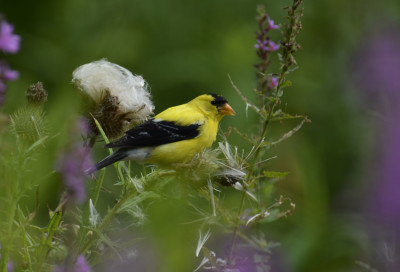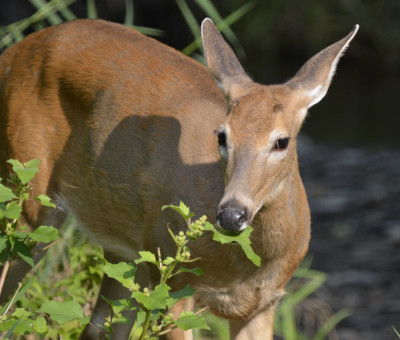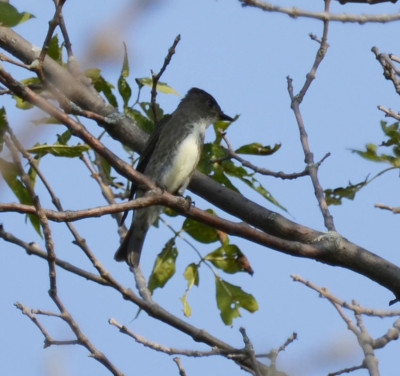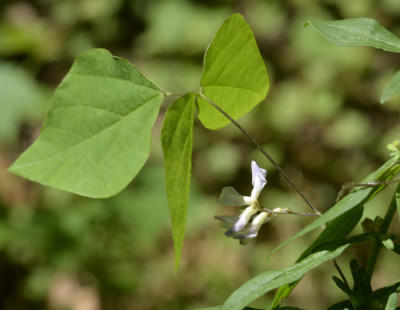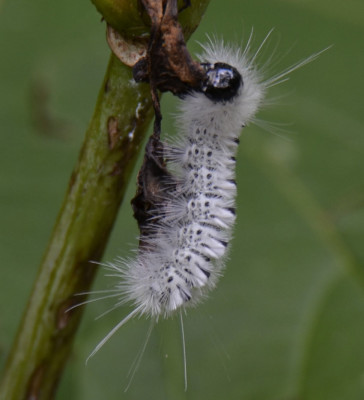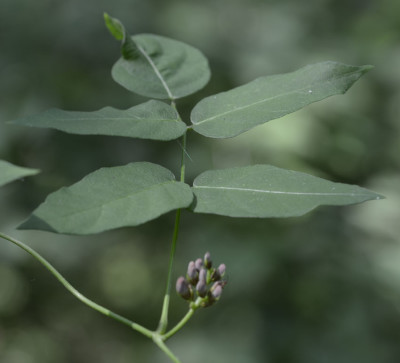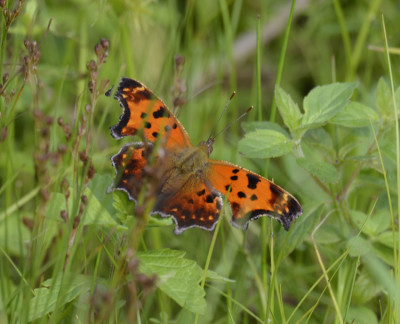The Rattray Marsh hosts an amazing variety of plants and creatures but at times it seems like it’s just a high-traffic footpath through a few trees and some bullrushes. It appeared particularly uninspiring the other day when the sounds of the ash tree removal team kept buzzing, whining and crashing through the peaceful morning. I find, though, that if I slow down or better yet stop and just start looking, listening and waiting I can find many worthwhile insights into a thriving world; I often even find something new to me.
To See More Birds and Wildlife, Try Standing Still Near Where Habitats Intersect
While I almost always see or notice something new if I stop anywhere in a natural area, I tend to see more if I choose a spot where a variety of habitats meet. For example, if I wait just under the trees along the edge of a forest where it adjoins a meadow, I find more. Today, I stopped for long intervals at two different locations. The first was near the southern bridge over Sheridan Creek. At this spot the marsh itself is to one side, the creek runs down the middle, a wooded area begins just upstream and downstream on the one side where the Knoll path winds, and a meadow-and-shrub area adjoins on the other side. It’s a smorgasbord for wildlife!
Birds Flock to Sheridan Creek to Bathe, Feed and Drink
While I watched, I saw a Ruby Throated Hummingbird visit the orange blossoms of Spotted Jewelweed. In a tangle of red Dogwood upstream, two warblers with yellow undersides and greenish backs darted after small insects. A couple of Warbling Vireos caught the insects around a dead bush that had fallen across the creek.
One of a group of seven or more Black Capped Chickadees perched on the railing beside me and offered some rather insolent advice about my photography skills. A Song Sparrow rooted determinedly amongst the grasses on the bank.
A family of Goldfinches took turns landing on the muddy water’s edge to take delicate sips of water.
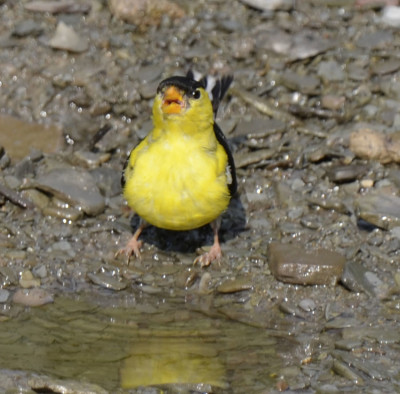
Does anyone look good taking a drink?
While I was trying to figure out the warblers, a deer came splashing down the creek and stopped to browse on the vines and shrubs along the shore. The birds retreated as it placidly munched.
If I’m correctly interpreting the small dots on this animals head, it’s a young buck not a doe. (Some female white-tailed deer can grow antlers but it’s not common, according to the Missouri Department of Conservation. ) It snacked for a while and I noticed a large number of mosquitoes were feasting on it. Then it increased the water level in the creek (don’t drink water from the wild unless you would also eat yellow snow!) and nibbled its way back upstream and out of view.
A few minutes later another family walked behind me on the board walk and quite probably thought there was nothing much to see at the Rattray. I didn’t have the heart to tell them what they’d just missed.
Take a Photo of Every Bird No Matter How Common: In Case It’s Not Common At All
I try to follow the above rule when I can. Several times I’ve been pleasantly surprised that a bird was NOT the one I thought it was before I lifted my lens in its direction.
While patiently watching the ebb and flow of wildlife, people, dogs and water at the southern bridge over Sheridan Creek, I spotted two large flycatchers winging in to perch briefly on some distant tree tops. (I think they were dying ash trees but I’m not sure.) Through the lens, I could make out a bit of a crest on the one I could capture so I believed they were some of the resident Great Crested Flycatchers, although I hadn’t heard them calling as they usually do.
When I checked my photo at home, though, I was surprised. The bird did not have a yellow underside like a Great Crested. Nor did it have a white line across the tail like a Kingbird. And it did have what looked like grey streaks down each side. After a bit of sleuthing, I discovered this bird was likely an Olive-Sided Flycatcher. More experienced birders agreed.
I’ve never knowingly seen an Olive-sided Flycatcher before. I’ve now seen one and probably seen two if the bird it was travelling with was another. They are migrating through southern Ontario according to reports on eBird and OntBirds.
What Wildflowers Are In Bloom in Late August at the Rattray Marsh?
Every year the flowering seasons can shift slightly and 2015 seems to be one where things are a bit later than some previous years. For example, on August 28, the various goldenrods were just starting to open and the asters weren’t really out yet much.
I did notice some White Turtlehead in both bud and blossom beside the culvert nearest to the Old Poplar Row entrance.
Along that same spur path, native Hog Peanut had also wound its way up and around other plants to show off pale white, pink and lilac blossoms. When checking the id using my Audubon Society Field Guide to North American Wildflowers, I read that these plants actually have two types of flowers: the showy ones I had seen, and ones with no petals on the lower parts of the plant. Incentive to look more closely on my next walk!
While stopped, I noticed an unknown Tussock Moth caterpillar busily munching away. And then, another wildflower:
A second vine, this one with long leaves, also grew in this area. It sported clusters of dull red buds of what looked like pea flowers that were not open yet. I worried that it was dog-strangling vine till I remembered that that had bloomed much earlier in the year, at least at Bronte Creek, and the flowers had not looked like these ones. Strangely, Google helped me find a possible match not when I was searching for a description of the plant, but when I was looking for images of hog peanut blossoms. The plant may be Apios americana or Groundnut. It’s another native and also has an edible bit which is not a nut. I’ll try to get a better photo later if I can. This was a new plant to me.
Many other more familiar wildflowers dotted various clearings, meadows and marsh edges. Blue Vervain, Viper’s Bugloss, pink spikes of Smartweed, zillions of Purple Loosestrife plants, a fresh crop of Cow Parsnip, twining Wild Cucumber vines with spikes of white flowers, larger thistles, pale yellow Evening Primroses and a few late St. John’s Wort.
Wild Riverbank Grapes were full and ripe, their purple red glowing as the sun shone through them. Dogwood berries, turning a ripe blue on red stalks, invited birds closer. Dogwood and baneberries added touches of white.
To Be Continued
Ok I haven’t even got to the edge of the marsh yet where I stopped for a second prolongued time and I’ve already mentioned seeing two new to me species: the Groundnut plant and the Olive-sided Flycatcher. I think I’d better stop now and continue this article on another page (and on another day). So stay tuned for further sights including Monarchs, Commas, Damsel and Dragonflies, an amphibian or two, and a new moth whose body does NOT gleam electric-blue but who otherwise looks much like the Ctenucha moth described earlier this year.
Related Reading
- Part Two of The Best Way (for Me) to See Nature at the Rattray Marsh
- What Moth has an Electric Blue Body and Black Wings?
Join In
Do you have a favourite spot to just stand or sit quietly and let nature reveal her secrets to you? Please share your sightings with a comment.

